Today's group is guaranteed to make you feel old, with three sons of players who were all still in the majors as of 2009, and the first player born in the 2000s to appear on any of my annual top 100s.
This score of players also includes the top prospects from Miami, Toronto, Tampa Bay, and Oakland.
Editor's note: Age is the player's age as of July 1, 2017.
Top 100 prospects ranked 1-20 | 21-40 | 41-60 | 61-80 | 81-100 | Index
 60. Thomas Szapucki, LHP, New York Mets
60. Thomas Szapucki, LHP, New York Mets
Age: 21 (6/12/96) | B/T: R/L
Height: 6-2 | Weight: 205
Top level: Short-season A-ball | 2016: NR
 Szapucki was the Mets’ fifth-round pick in the 2015 draft as a 19-year-old senior out of high school in West Palm Beach, but he pitched just two innings that summer after he signed, so he came into 2016 as just another guy in the system. Then he delivered a true breakout season, as he moved from the Appy League to the New York-Penn League and dominated at both stops. He did so working a 92-96 mph fastball with a wipeout curveball and good command of both pitches, as well as a nascent changeup that he has taken from nonexistent to average in a year.
Szapucki was the Mets’ fifth-round pick in the 2015 draft as a 19-year-old senior out of high school in West Palm Beach, but he pitched just two innings that summer after he signed, so he came into 2016 as just another guy in the system. Then he delivered a true breakout season, as he moved from the Appy League to the New York-Penn League and dominated at both stops. He did so working a 92-96 mph fastball with a wipeout curveball and good command of both pitches, as well as a nascent changeup that he has taken from nonexistent to average in a year.
His season ended in mid-August after just nine starts and 52 innings due to back soreness, but before that, he showed at least mid-rotation potential, between the out pitch in the curveball and the ability to throw everything for strikes. This will be a big year for him developmentally, as he’ll be asked to throw most of a full season, and his stuff alone should dominate low-A hitters. His potential to turn into even a solid No. 3 starter would be an enormous success story for a team’s fifth-round pick.
 59. Kevin Maitan, SS, Atlanta Braves
59. Kevin Maitan, SS, Atlanta Braves
Age: 17 (2/12/00) | B/T: B/R
Height: 6-2 | Weight: 175
Top level: None | 2016: NE
 Maitan signed with Atlanta for $4.25 million on July 2 and was considered the best offensive prospect to come out of the Latin American amateur market since Miguel Sano came out of the Dominican Republic in 2009.
Maitan signed with Atlanta for $4.25 million on July 2 and was considered the best offensive prospect to come out of the Latin American amateur market since Miguel Sano came out of the Dominican Republic in 2009.
The Venezuelan shortstop probably won’t stay at the position, given how big he’s likely to become, but he has earned swing comparisons to Miguel Cabrera, with big power for his age already and good feel to hit from both sides of the plate, though his right-handed swing is the better of the two right now. His swing can get long, and he might be a higher strikeout guy than Miggy was, more in the vein of Sano as a younger hitter in the low minors, but there’s real offensive upside here, as far as his hit and power tools, if he shows even a modicum of plate discipline.
In the field, Maitan has the plus arm you want for third base, but even if he stays 6-foot-2, he could easily end up in the 210-220-pound range, and he isn’t a lock to stay on the dirt. He’s on this list because of the unanimous assessments of international scouts that he’s a different level of hitting prospect than we’ve seen come out of Latin America this decade, and Atlanta might have its next middle-of-the-order prospect thanks to the decision to blow out its 2016 international budget to sign him.
 58. Raimel Tapia, OF, Colorado Rockies
58. Raimel Tapia, OF, Colorado Rockies
Age: 23 (2/4/94) | B/T: L/L
Height: 6-2 | Weight: 160
Top level: MLB | 2016: 78
 Tapia has hit .300 at every stop since he was 18 in the Dominican Summer League, even in the Arizona Fall League, right up until his 41 PA major league debut in 2016. He rarely walked, made a ton of contact and showed extra-base power everywhere he played. Tapia has incredible hand-eye coordination and plus bat speed, which allows him to hit like he does despite a hilariously wide stance at the plate that would sink most hitters. His plate coverage is excellent, with his only significant hole being front and back if his timing is off. He’s a plus runner who has really not had enough success on the bases for his speed, and he is an average defender in center who’ll be bumped to a corner by David Dahl.
Tapia has hit .300 at every stop since he was 18 in the Dominican Summer League, even in the Arizona Fall League, right up until his 41 PA major league debut in 2016. He rarely walked, made a ton of contact and showed extra-base power everywhere he played. Tapia has incredible hand-eye coordination and plus bat speed, which allows him to hit like he does despite a hilariously wide stance at the plate that would sink most hitters. His plate coverage is excellent, with his only significant hole being front and back if his timing is off. He’s a plus runner who has really not had enough success on the bases for his speed, and he is an average defender in center who’ll be bumped to a corner by David Dahl.
Tapia could be someone’s center fielder, but he’ll probably end up in right field for the Rockies, and Coors Field is a friendly place for a high-contact hitter such as Tapia, who should be good for 35-40 doubles a year as a Rockie with high batting averages but mediocre OBPs, which makes him a very good regular but probably less than a star.
 57. Kyle Tucker, OF, Houston Astros
57. Kyle Tucker, OF, Houston Astros
Age: 20 (1/17/97) | B/T: L/R
Height: 6-4 | Weight: 190
Top level: High-A | 2016: 67
 The fifth overall pick in 2015, Tucker had a solid full-season debut for Low-A Quad Cities. He hit .276/.348/.402 as a 19-year-old with solid plate discipline, then moved up to destroy Lancaster because hitting there is like playing on the surface of the moon. (The Astros must be overjoyed to move their high-A affiliate out of the California League to the Carolina League.)
The fifth overall pick in 2015, Tucker had a solid full-season debut for Low-A Quad Cities. He hit .276/.348/.402 as a 19-year-old with solid plate discipline, then moved up to destroy Lancaster because hitting there is like playing on the surface of the moon. (The Astros must be overjoyed to move their high-A affiliate out of the California League to the Carolina League.)
Tucker played more center in 2016 than either corner, but I think he’s clearly going to end up in right field, given his average speed and plus arm. He showed great feel for hitting and baserunning in 2016, especially in his approach at the plate, and though his power output was modest, his swing is definitely geared to produce more extra-base hits and around 20 homers a year when he fills out.
I did hear from some scouts who were just tepid on Tucker, saying he doesn’t play with much energy and calling him a “low motor” guy, though I find those observations tough to verify or refute. Assuming that isn't a problem, he should be primed for a solid step forward in 2017, adjusting to better pitching in high-A and perhaps bringing some more of his batting practice power into games.
 56. Franklin Barreto, SS, Oakland Athletics
56. Franklin Barreto, SS, Oakland Athletics
Age: 21 (2/27/96) | B/T: R/R
Height: 5-10 | Weight: 190
Top level: Triple-A | 2016: 22
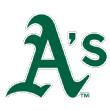 Barreto has a lot of pure ability that has gotten him up to a brief trial in Triple-A, though the season also exposed some questions about his game that have hurt his value. On the plus side, Barreto can really barrel up a fastball, and after a slow start in 2016, he returned to his usual offensive ways as the season went on, making solid contact to all fields, albeit without present power or much hope of it in the future. He’s a plus runner with quick feet at shortstop but might still end up moving to second base or even center field.
Barreto has a lot of pure ability that has gotten him up to a brief trial in Triple-A, though the season also exposed some questions about his game that have hurt his value. On the plus side, Barreto can really barrel up a fastball, and after a slow start in 2016, he returned to his usual offensive ways as the season went on, making solid contact to all fields, albeit without present power or much hope of it in the future. He’s a plus runner with quick feet at shortstop but might still end up moving to second base or even center field.
Barreto’s star has dimmed somewhat after 2016, including a rough showing in the Arizona Fall League, in which he was eaten alive by breaking stuff and was erratic (to be kind) in the field. There’s also gossip that he hasn’t shown the work ethic required to make himself into a solid defensive shortstop. His bat will still play at second or center, and even as bad as he looked at times in the AFL, he put the ball in play more than three-fourths of the time, but if he wants to stay at short or reach his full potential as an above-average everyday player, he’s going to have to boost his effort.
 55. Anthony Alford, OF, Toronto Blue Jays
55. Anthony Alford, OF, Toronto Blue Jays
Age: 22 (7/20/94) | B/T: R/R
Height: 6-1 | Weight: 215
Top level: High-A | 2016: 52
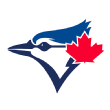 Alford’s 2016 season started as an outright disaster. He played one game in April, got hurt, returned four weeks later, then struck out in 30 of his first 57 PAs over two weeks and 51 out of 134 total before he was injured in an outfield collision June 11, which cost him another 10 days. After that second DL stint, he hit .256/.379/.447 over 59 games through the end of the season, with a much better 25 percent strikeout rate. He finished with a so-so performance in the AFL.
Alford’s 2016 season started as an outright disaster. He played one game in April, got hurt, returned four weeks later, then struck out in 30 of his first 57 PAs over two weeks and 51 out of 134 total before he was injured in an outfield collision June 11, which cost him another 10 days. After that second DL stint, he hit .256/.379/.447 over 59 games through the end of the season, with a much better 25 percent strikeout rate. He finished with a so-so performance in the AFL.
Overall, it was a year to forget, culminating in a fire that destroyed his mother’s house right after Christmas (he set up a Gofundme page to help them rebuild). Alford is still an elite athlete and looked in 2016 like a former football player still adjusting to playing baseball full time.
When healthy, he’s a disciplined hitter for someone so inexperienced, and there’s at least average power to go with plus running speed. His reads in center might just not be good enough for him to stay there, though again, it might be his lack of baseball experience showing. On the whole, it was a sideways year for Alford, but the positive news is he’s healthy and will be the right age (22) for his Double-A debut in 2017.
 54. Brent Honeywell, RHP, Tampa Bay Rays
54. Brent Honeywell, RHP, Tampa Bay Rays
Age: 22 (3/31/95) | B/T: R/R
Height: 6-2 | Weight: 180
Top level: Double-A | 2016: 64
 Yes, Virginia, there is a screwball, and I’ve even seen Honeywell throw it with my own eyes, but that’s not going to be his ticket to a major league rotation. When he’s right, Honeywell is a four-pitch guy, with a straight fastball coming in at 92-97 mph, a plus changeup in the low 80s, a new slider/cutter in the upper 80s that’s fringy right now and the aforementioned screwball, which comes in at 85-86 mph when I saw it with some tailing action.
Yes, Virginia, there is a screwball, and I’ve even seen Honeywell throw it with my own eyes, but that’s not going to be his ticket to a major league rotation. When he’s right, Honeywell is a four-pitch guy, with a straight fastball coming in at 92-97 mph, a plus changeup in the low 80s, a new slider/cutter in the upper 80s that’s fringy right now and the aforementioned screwball, which comes in at 85-86 mph when I saw it with some tailing action.
The screwball is a different look for hitters, but Honeywell's success is going to come from the whole repertoire, with the changeup more likely to become his out pitch. However, when I saw him pitch in the AFL, he was all the way on the extreme first-base end of the rubber, so his fastball was right over the plate for right-handed batters, something they can probably fix quickly just by moving him to the center.
Honeywell missed about six weeks in 2016 with arm soreness, and though he returned intact, it’s a concern to see a pitcher who has a trick pitch -- one that, according to conventional wisdom (but no hard evidence), causes elbow problems -- come up sore. If the cutter becomes an average or better pitch, that will give him four legitimate major league options, with at least one plus, which puts him right into fourth starter territory, with a chance to be as much as a No. 2, given health and the development of his non-screwball weapons.
 53. Nick Gordon, SS, Minnesota Twins
53. Nick Gordon, SS, Minnesota Twins
Age: 21 (10/24/95) | B/T: L/R
Height: 6-0 | Weight: 160
Top level: High-A | 2016: 98
 Gordon can really, really hit, and while his offensive potential isn’t that great because of the lack of power, I think he’s going to hit for high averages for a very long time. He will also surprise people with his defensive prowess because his feel for both sides of the game is so incredible.
Gordon can really, really hit, and while his offensive potential isn’t that great because of the lack of power, I think he’s going to hit for high averages for a very long time. He will also surprise people with his defensive prowess because his feel for both sides of the game is so incredible.
Gordon has exceptional hands at the plate and in the field, so his bat is quick, and he makes a ton of contact, though he should be hitting more line drives and fewer ground balls, given his swing path. He can square up good velocity and adjusted very well to breaking stuff down and away when I last saw him in the AFL. He’s running just average now after being a tick above that in high school, so if that isn't part of his game, he will need to get the ball in the air more often because he isn't going to be beating ground balls to the left side.
On defense, he’s the antithesis of the flashy shortstop, but he has a knack for getting himself in the right place to make the difficult play. The tools say he’ll be an average big leaguer, but I believe his instincts and understanding of the game will allow him to be more.
 52. Ian Anderson, RHP, Atlanta Braves
52. Ian Anderson, RHP, Atlanta Braves
Age: 19 (5/2/98) | B/T: R/R
Height: 6-3 | Weight: 170
Top level: Rookie | 2016: NE
 Anderson was the third overall pick in June, a big, strong right-hander from upstate New York who didn’t pitch much around bad weather and some non-arm health issues, but he looked every bit of the high first-rounder after signing. Anderson was throwing 94-97 mph this summer with a hammer curveball and a workable changeup, showing more control than command in his brief time in the Gulf Coast and Appy Leagues.
Anderson was the third overall pick in June, a big, strong right-hander from upstate New York who didn’t pitch much around bad weather and some non-arm health issues, but he looked every bit of the high first-rounder after signing. Anderson was throwing 94-97 mph this summer with a hammer curveball and a workable changeup, showing more control than command in his brief time in the Gulf Coast and Appy Leagues.
His 6-foot-3 frame is already filling out, and he looks like he’ll be a workhorse starter. Even in the shuffling madness of Atlanta’s glut of pitching prospects, he might be ready to jump up to low-A Rome to start 2017. Building stamina for a full season, working on fastball command and improving that changeup will all be key development points for Anderson. Atlanta feels it might have a future No. 1 starter, though I think he’s more of a No. 2, which is still a tremendous outcome for the third pick in any draft.
 51. Carson Kelly, C, St. Louis Cardinals
51. Carson Kelly, C, St. Louis Cardinals
Age: 22 (7/14/94) | B/T: R/R
Height: 6-2 | Weight: 220
Top level: MLB | 2016: NR
 Kelly has been catching for only three years, but in that span, he has become a good enough receiver and thrower that he projects as an everyday backstop, with the chance to become more depending on how his bat develops. His offense took a backseat for years while the Cardinals worked with him on his defense, but he’s an intelligent, diligent kid who threw himself into the task, and the results are very promising, as he’s at least an average receiver now and has nailed about a third of opposing base stealers in the minors.
Kelly has been catching for only three years, but in that span, he has become a good enough receiver and thrower that he projects as an everyday backstop, with the chance to become more depending on how his bat develops. His offense took a backseat for years while the Cardinals worked with him on his defense, but he’s an intelligent, diligent kid who threw himself into the task, and the results are very promising, as he’s at least an average receiver now and has nailed about a third of opposing base stealers in the minors.
At the plate, Kelly is a tough out. He has never struck out more than 64 times in a pro season but is still learning ‘his’ strike zone, such as making better choices of when to swing and when to take. Kelly hasn’t hit for much power in pro ball, but there’s some raw juice in there, as he showed with a big home run at Petco Park in the Futures Game. His swing isn’t geared for huge home run totals, with a short load and path into the zone, but he could end up in the 10-12 homer range with high averages as he learns to make hard contact.
Everyday catchers are hard to find and the offensive standard is low, so Kelly looks like a very likely regular, with a chance to be more if his bat develops further, as the old saw about catching prospects says it might.
 50. Max Fried, LHP, Atlanta Braves
50. Max Fried, LHP, Atlanta Braves
Age: 23 (1/18/94) | B/T: L/L
Height: 6-4 | Weight: 185
Top level: Low-A | 2016: 96
 Fried missed almost two full seasons due to Tommy John surgery, throwing just 10 innings in all of 2014, then returning to official games in April 2016 after 21 months of rehab and recovery, but all signs from this past year were positive.
Fried missed almost two full seasons due to Tommy John surgery, throwing just 10 innings in all of 2014, then returning to official games in April 2016 after 21 months of rehab and recovery, but all signs from this past year were positive.
Fried was throwing up to 97 mph by the end of the year, with the plus curveball still there and good feel for his changeup. He’s an outstanding athlete with a bit of a long arm action, but he repeats it well, and as he showed by the end of the year, he’s a strike-thrower with a good chance to develop future-plus command. His walk rate improved in the second half of his season, and his strikeout rate increased. If you split his season in half, in his past 10 outings, he went 49⅔ innings, walked 15 and struck out 64, with a 3.08 ERA.
I’ve long had Fried projected as an above-average starter, a No. 3 in a good rotation or a No. 2 in others, but if he can keep that mid-90s velocity as a starter for a full season, that projection might turn out to be low.
 49. Jesse Winker, OF, Cincinnati Reds
49. Jesse Winker, OF, Cincinnati Reds
Age: 23 (8/17/93) | B/T: L/L
Height: 6-3 | Weight: 215
Top level: Triple-A | 2016: 41
 Winker probably would have reached the majors last year, were it not for an early-season wrist injury that hindered his hitting and power until he took three weeks off to let it heal. He hit .320/.415/.403 after his return, rarely striking out. Although the power was still down from the previous year, a .400 OBP and 30-35 doubles will make you an everyday player in left field. Winker is a gifted hitter with an extraordinary approach at the plate that he has had since he entered pro ball, and though I don’t think he’ll ever hit 20 homers in a season, 2016 was the first time he failed to reach double digits, and I think he’ll settle in the 10-15 range as a big league regular.
Winker probably would have reached the majors last year, were it not for an early-season wrist injury that hindered his hitting and power until he took three weeks off to let it heal. He hit .320/.415/.403 after his return, rarely striking out. Although the power was still down from the previous year, a .400 OBP and 30-35 doubles will make you an everyday player in left field. Winker is a gifted hitter with an extraordinary approach at the plate that he has had since he entered pro ball, and though I don’t think he’ll ever hit 20 homers in a season, 2016 was the first time he failed to reach double digits, and I think he’ll settle in the 10-15 range as a big league regular.
There isn’t big upside here -- Winker hasn’t changed much at all since high school, physically or in his approach -- but there’s a very high floor, and he’s ready to play in the majors right now. The one way he could surprise us and become a star is if he hits for higher averages than I’m forecasting, which would mean trading 20 ground balls a year for line drives, something his swing would permit but he just hasn’t done yet.
 48. Vladimir Guerrero Jr., 3B, Toronto Blue Jays
48. Vladimir Guerrero Jr., 3B, Toronto Blue Jays
Age: 18 (3/16/99) | B/T: R/R
Height: 6-1 | Weight: 200
Top level: Rookie | 2016: 40
 Yes, that’s Vlad’s son, and yes, you are old. Vlad Jr. signed with the Jays for $3.9 million in July 2015, and the Jays were aggressive in sending him to the Appalachian League at age 17 last summer, but he exceeded even those high expectations. Guerrero was the best hitting prospect in the Appy League, walking almost as often as he struck out, and he finished in the top 10 in the league in homers and walks. By all accounts, he played solid defense at third base (with a plus arm, natch).
Yes, that’s Vlad’s son, and yes, you are old. Vlad Jr. signed with the Jays for $3.9 million in July 2015, and the Jays were aggressive in sending him to the Appalachian League at age 17 last summer, but he exceeded even those high expectations. Guerrero was the best hitting prospect in the Appy League, walking almost as often as he struck out, and he finished in the top 10 in the league in homers and walks. By all accounts, he played solid defense at third base (with a plus arm, natch).
While Guerrero has outstanding tools, including surprising speed and projected plus power, it’s his feel for the game that impressed scouts in 2016, as he shows real instincts on both sides of the ball, including that advanced approach and enough feel that he has at least an even-money chance to stay at third. The sky is the limit for young Vladimir, and if he doesn’t outgrow the hot corner, the Jays might have a 30-homer bat who gets on base to take over when Josh Donaldson leaves.
 47. Fernando Tatis Jr., SS/3B, San Diego Padres
47. Fernando Tatis Jr., SS/3B, San Diego Padres
Age: 18 (1/2/99) | B/T: R/R
Height: 6-3 | Weight: 185
Top level: Short-season A-ball | 2016: NR
 Tatis signed with the White Sox in 2015 for $825,000 but never played an official game for them, as they traded him with Erik Johnson to San Diego in June for James Shields, with Tatis still in extended spring training at the time. Within a few weeks, it became evident that the Padres had landed an outstanding prospect in the least-known part of the deal, as Tatis blew scouts in the AZL away and held his own at 17 in the advanced short-season Northwest League.
Tatis signed with the White Sox in 2015 for $825,000 but never played an official game for them, as they traded him with Erik Johnson to San Diego in June for James Shields, with Tatis still in extended spring training at the time. Within a few weeks, it became evident that the Padres had landed an outstanding prospect in the least-known part of the deal, as Tatis blew scouts in the AZL away and held his own at 17 in the advanced short-season Northwest League.
Tatis is an advanced hitter already at 17, with great feel for the game on both sides of the ball, including a good hitting approach for that age and a strong frame (he has his father’s square shoulders) that should produce at least average power but probably more. His hands are loose, and he has a quick transfer in the field with a plus arm, so if the body moves him to third base in time -- as is about 80 percent likely -- he has the arm for it and will be at least a 60-grade defender there.
There’s upside across the board here, from the physical tools to the makeup to the incredible feel for the game in a kid who would be a high school senior right now if he were U.S.-born. There’s risk, given his age, but we might look back on this deal in a few years and call it the Fernando Tatis trade.
 46. Yadier Alvarez, RHP, Los Angeles Dodgers
46. Yadier Alvarez, RHP, Los Angeles Dodgers
Age: 21 (3/7/96) | B/T: R/R
Height: 6-3 | Weight: 175
Top level: Low-A | 2016: NR
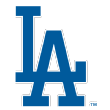 For raw stuff, Alvarez might be the best pitching prospect in the minors. He’ll work in the upper 90s and can show you a plus slider now and again, but the lack of consistency and command hold him out of the upper tier of this list. Alvarez signed as an amateur free agent out of Cuba for $16 million in 2016, which meant the Dodgers paid double that including the penalty for exceeding their bonus cap, so he’d better have a good arm … and he does. But he showed up last summer struggling to find the plate, so he didn’t debut in pro ball until this year’s Arizona League.
For raw stuff, Alvarez might be the best pitching prospect in the minors. He’ll work in the upper 90s and can show you a plus slider now and again, but the lack of consistency and command hold him out of the upper tier of this list. Alvarez signed as an amateur free agent out of Cuba for $16 million in 2016, which meant the Dodgers paid double that including the penalty for exceeding their bonus cap, so he’d better have a good arm … and he does. But he showed up last summer struggling to find the plate, so he didn’t debut in pro ball until this year’s Arizona League.
The Dodgers slowed his tempo, so Alvarez’s delivery is more deliberate now, to the point that it’s surprising how hard he’s throwing, and he’s staying on top of the ball and getting more online to the plate. The slider is good, but the big power curveball might end up better if he focuses on that pitch. He might pitch with four distinct offerings, two or even three grading plus, but it’s thrown with grade 40 command, which would make him a big league starter but maybe just an average one. If the command improves -- and there’s no delivery-related reason it can’t -- then he has a chance to profile anywhere up to the top of a rotation.
 45. Jorge Alfaro, C, Philadelphia Phillies
45. Jorge Alfaro, C, Philadelphia Phillies
Age: 24 (6/11/93) | B/T: R/R
Height: 6-2 | Weight: 225
Top level: MLB | 2016: 82
 Alfaro returned from an injury-shortened 2015 to have a much better offensive season while repeating Double-A, and he showed enough progress as a receiver that the Phillies appear committed to leaving him behind the plate in the long run. Alfaro’s physical gifts have always been apparent -- he has an 80 arm and 80 raw power -- but his plate discipline has ranged from bad to awful, and he was often indifferent behind the plate unless it was time to throw someone out.
Alfaro returned from an injury-shortened 2015 to have a much better offensive season while repeating Double-A, and he showed enough progress as a receiver that the Phillies appear committed to leaving him behind the plate in the long run. Alfaro’s physical gifts have always been apparent -- he has an 80 arm and 80 raw power -- but his plate discipline has ranged from bad to awful, and he was often indifferent behind the plate unless it was time to throw someone out.
The latter problem appears to have dissipated this past year, as all accounts have Alfaro more active behind the plate, moving his feet better, blocking more balls and taking more of a role in game-calling. As for plate discipline, he might never be much of an OBP guy, but he did improve his contact rate the second time through Double-A, though I’d still like to at least see him work the count to get himself ahead, even if it doesn’t produce more walks.
Given this improvement, it seems like he’s going to be an everyday catcher in the majors, and a reasonable projection for Alfaro of .270/.300/450 with a caught-stealing rate of 35-40 percent would likely make him an above-average regular.
 44. Aaron Judge, RF, New York Yankees
44. Aaron Judge, RF, New York Yankees
Age: 25 (4/26/92) | B/T: R/R
Height: 6-7 | Weight: 275
Top level: MLB | 2016: 36
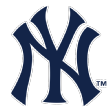 Judge struggled with contact in the majors -- with 42 strikeouts in 95 plate appearances. But that’s nothing new for him: Judge punched out in 29 percent of his PAs in his first month in Double-A, then cut it to 23 percent for the next six weeks and was promoted to Triple-A, whereupon he did the same thing: 28 percent in his first Triple-A stint in 2015 and down to 24 percent in 2016, after which he came to the majors.
Judge struggled with contact in the majors -- with 42 strikeouts in 95 plate appearances. But that’s nothing new for him: Judge punched out in 29 percent of his PAs in his first month in Double-A, then cut it to 23 percent for the next six weeks and was promoted to Triple-A, whereupon he did the same thing: 28 percent in his first Triple-A stint in 2015 and down to 24 percent in 2016, after which he came to the majors.
Judge is enormous -- 6-foot-7 and listed at 275 pounds -- with a strike zone to match. Covering the inner third and the outside corner simultaneously has been an ongoing challenge for him, with pitchers at each level commanding the ball better to exploit this issue. He has shown that he can tighten up his discipline after some time at each level, though doing so in the majors will be the hardest challenge he has faced.
But if Judge gets that back down to that 25-30 percent range, he’ll be an offensive force because the contact he makes is so hard. He has real 30-homer power, even at that contact rate, and he has shown enough patience that I think he’ll walk 60-plus times a year. With his athleticism -- he’s an average runner -- and plus arm, he’d be an asset in right field, all of which adds up to more than just an everyday player.
 43. Willy Adames, SS, Tampa Bay Rays
43. Willy Adames, SS, Tampa Bay Rays
Age: 21 (9/2/95) | B/T: R/R
Height: 6-1 | Weight: 180
Top level: Double-A | 2016: NR
 Adames has a pretty right-handed swing that looks almost effortless, and in 2016, that swing started to produce, even though he was promoted at age 20 to Double-A. Every statistical indicator moved up for Adames in 2016 -- he hit for a higher average and more power, he walked more, he struck out less and slightly upped his line-drive rate. He even set a career high with 13 steals, though he’s a below-average runner and that isn't going to be part of his game. Just looking at his frame and the angle of his swing, it seems extremely likely that he’ll add at least one more grade of power, and he should be a 20-plus homer guy in the majors.
Adames has a pretty right-handed swing that looks almost effortless, and in 2016, that swing started to produce, even though he was promoted at age 20 to Double-A. Every statistical indicator moved up for Adames in 2016 -- he hit for a higher average and more power, he walked more, he struck out less and slightly upped his line-drive rate. He even set a career high with 13 steals, though he’s a below-average runner and that isn't going to be part of his game. Just looking at his frame and the angle of his swing, it seems extremely likely that he’ll add at least one more grade of power, and he should be a 20-plus homer guy in the majors.
On defense, Adames probably isn’t going to stay at shortstop, though the Rays are adamant that he can. His hands are fine, but he isn't fast or agile, and his lateral range isn’t going to be as good as what most big league shortstops provide. He’d be an ideal third baseman in build, in arm strength and in offensive profile, but maybe he breaks into the majors as a shortstop for a year or two.
He’s so young that a full year in Triple-A to consolidate the gains he made and work on his defense at whatever position they try would make sense, but I feel much better about Adames' becoming an above-average hitter at either position than I did this time last year, when his best attribute was his youth.
 42. Braxton Garrett, LHP, Miami Marlins
42. Braxton Garrett, LHP, Miami Marlins
Age: 19 (8/5/97) | B/T: B/L
Height: 6-3 | Weight: 190
Top level: Rookie | 2016: NE
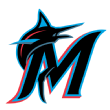 It’s hard to not like a pitching machine such as Garrett, as high school pitchers with his kind of stuff rarely bring his kind of command. The time I saw him, he struck out 15 batters in seven innings and threw only 11 called balls the entire game.
It’s hard to not like a pitching machine such as Garrett, as high school pitchers with his kind of stuff rarely bring his kind of command. The time I saw him, he struck out 15 batters in seven innings and threw only 11 called balls the entire game.
He’s mostly throwing heat around 90-93 mph, complemented with a plus curveball right now. He throws both pitches for strikes, getting swing-and-misses on the curveball as well, but he will also show an average changeup with good arm speed. Garrett’s delivery doesn’t have much effort to it, and he finishes well out front to get good, late downward bite on that breaking ball.
I don’t know if there’s a huge ceiling here, as Garrett might add a little velocity but not a ton, and the curveball is already a swing-and-miss offering. But he’s more likely than any 19-year-old pitcher on this list to end up an average big league starter, and I think he ends up comfortably above average for a very long time.
 41. Isan Diaz, 2B/SS, Milwaukee Brewers
41. Isan Diaz, 2B/SS, Milwaukee Brewers
Age: 21 (5/27/96) | B/T: L/R
Height: 5-10 | Weight: 185
Top level: Low-A | 2016: NR
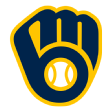 The Diamondbacks got more out of Jean Segura than they had any right to expect, as he produced a five-win season and allowed the new regime in Phoenix to flip him to Seattle for two former top prospects, but the part of that deal that is going to sting is Diaz.
The Diamondbacks got more out of Jean Segura than they had any right to expect, as he produced a five-win season and allowed the new regime in Phoenix to flip him to Seattle for two former top prospects, but the part of that deal that is going to sting is Diaz.
Born in Puerto Rico, Diaz was drafted in the second round out of western Massachusetts, seemed a bit overmatched in rookie ball his first summer but has really broken out the past two years now, including a 20-homer, 72-walk season as a 20-year-old in the full-season Midwest League in 2016. Diaz led the league in homers and walks and finished sixth in doubles, which mitigates the part about his leading the league in strikeouts too. He’s a left-handed hitter with explosive hips that provide bat speed and the rotational action that produces power from his 5-foot-10 frame.
He has played short and second, but his body and arm will push him to the latter position as he moves up the ladder. He’s athletic enough to be a 50/55 defender at the keystone. But it’s the bat that sells him. He is already showing on-base skills and power at a young age, and it will take only marginal growth to make him a big league regular, with the potential for more if he improves his swing choices as he moves up.
